UK Garden Retailing
Like many of my friends in the UK and United States, my family and I are spoiled for places to shop for our food, clothes and houseware products. While we all have regional and local favorites, the general retail standards on both sides of the pond are extremely good. Each time I travel to America I am inspired by merchandising, product choice and price point, so much so that I usually come over with one change of clothes and an empty suitcase to take advantage of the exchange rate and quality products offered. This is reinforced with consistently high levels of creative design, merchandise display, store layout and, of course, customer service standards that are always different from those in the UK.
However, as soon as I step away from the mall and wander towards a garden center, things look at little different. While the plant stock is usually of equal quality to the UK, and service is always with a smile, the building, design, image and presentation at most centers are a little bit different than ones in the UK. Unlike Crate & Barrel, Dean & De Luca, Whole Foods Market and many more exemplary retailers in the United States, the garden center businesses do not seem to be developing, adapting and changing to entice and excite the customer in the same way as their mainstream retail colleagues.
Furthermore, these industry-leading retailers are where we as designers often gain our inspiration and influences when re-planning and re-inventing garden centers. We can all learn and improve our understanding of retail techniques simply by observing industry leaders in action, and more to the point, it costs nothing to window shop! We should not be embarrassed or concerned about applying ideas and principles from these leaders, especially when this can often lead to increased sales and improved profile.
The Building Trend
There are many contrasts and differences between garden center retailing in the UK and the United States, the most significant of which are the level of investment in new buildings and specific, strategic targeting of the customers’ leisure time. Without a doubt, the “destination” nature of many centers in the UK means longer visit times and far more leisure-orientated products and appeal. Combined with a very commercial but none-the-less creative approach to the buildings and infrastructure, specialized offers such as restaurants, farm food halls, gift shops, furniture departments and household products extend the package and customer appeal further. On many sites this appeal is complimented by the center’s countryside location, nature walks, mazes, organic-bias products and seasonally themed and promoted events.
The trend toward investing in infrastructure is not influenced by ego alone; there is proven gain in the form of customer loyalty and financial success for the center’s careful planning and bold investment. Talking to many of you when you visit the UK, you are amazed, shocked or simply confused that such a huge investment is being made in garden center redevelopment by independents and groups. While many of these destination centers with their “shop within a shop” layout and variety are ideal for the UK customer, the same formula and approach is by no means immediately appropriate in the United States.
It is worth noting that this approach and investment strategy is by no means slowing down, with many large projects, some in excess of 100,000 sq.ft., currently on the drawing board or being constructed. My company, Hpw, is working on the detailed stages of one such project with Blooms of Bressingham at Bicester, which is within 1-hour drive of London and Birmingham. This scheme embraces a 26-acre site, 800+ parking spaces, and a 50,000-sq.ft. garden center with an 80,000-sq.ft. outdoor sales area and 30,000 sq.ft. of hoop houses for year round protected plant display. In addition, there are a dozen complimentary retail units totalling another 50,000 sq.ft., which forms a miniature shopping mall with Blooms as the anchor tenant.
An integral feature of the scheme is a detailed and mature landscaping plan, which will provide further emphasis on Blooms horticultural pedigree and a wonderful backdrop for the retail offer. The attention to detail undertaken by the project team has been combined with the client’s investment aims to ensure customer “wow factor” on a consistent and sustained basis for many years to come.
Take It Under Consideration
While the scale of these projects may at present be inappropriate in the United States, there are many aspects of this development strategy that may provide inspiration and be of practical advantage to your businesses. Having worked closely with a broad cross-section of garden center and nursery owner/operators and various groups throughout the UK since 1992, we have found many successful ways to improve and enhance customer sales, appeal and image through the use of innovative and practical design solutions.
Whether on a small, medium or large scale, the planning, design and preparation stages involve the same commitment. To develop and implement the most appropriate solution for each specific site and operator’s needs, there are many tasks and approaches to consider. These often include all of the following areas to varying degrees and should be considered and reviewed when embarking on future improvements to your center:
Masterplan. This coordinated design scheme helps you develop your site in a phased process over a 1-, 3-, 5- or 10-year plan. The appropriate people should review and agree on the most cost-effective and appropriate construction techniques for new buildings and site infrastructure to ensure you achieve your long-term goal and investment return strategy. This plan then provides a document and drawings to help staff buy materials, ensure planning approval and gain funding. Whatever the scale of your business, this approach allows decisions to be made with clarity and consistency.
Makeover. In a makeover you would refurbish, renovate or refresh entrance areas, key departments and the parking lot, concentrating on visual impact and operational efficiencies of layout. This exercise often includes the application of new signage and is driven by maximum effect for minimum outlay.
Signage and visual identity. A new look in graphics/visual identity can be applied to the building exterior and interior, roadside signage, stationary, packaging and staff uniforms, providing a fresh and up-to-date image for your business.
Shopfitting. This covers introducing retail-quality display, lighting and merchandise units to improve visual impact, consistency of look and customer appeal. Efficiencies of stocking and managing product are always improved by the installation of new fittings, not to mention the benefits from the increased pride and up-keep of your investment by you and your team. Often, the installation of new lighting alone can provide hugely increased atmosphere and focused displays.
Benching and POS. Combine raised benching and flexible irrigation installation to improve plant display and ease of maintenance. Create hot spots by introducing easy-to-read signage and new point of sale to provide a clear, informative and consistent image. Increasingly, the shop within a shop approach is being applied to plant sales with the use of flexible benching systems. Instant gardening and mature specimens form an increasingly important part of this approach.
Houseplants. Design display units for the flexible and creative merchandising of houseplants and hanging baskets. Houseplants should be located in a key entry/exit location adjacent to checkouts for maximum impulse purchase and impact. In conjunction with these displays we encourage the cross selling and display of related products such as growing media, books, feed and plant-care products. Increasingly, we are encouraging the display and promotion of houseplants as gifts, always in a pot cover with appropriate dressing and ready to look good in the home.
Try New Things
The overriding message has to be to try out new ideas and look at how other retailers create customer appeal and excitement, thus encouraging customers to visit more regularly and enjoy their stay when they do. Freshening the look of your centers, whether with a coat of paint or more extensive renovation work, always makes an impact, so why not try it out? When considering how to change and improve the look of your store, be aware of what your competition is doing, but most importantly, ensure you gain your inspiration from the shops your customers most enjoy visiting and spending their hard-earned money in.
While this is all pretty achievable and experimenting can be fun, do not lose sight of your long-term goals and ensure you thoroughly think through what it is you are seeking to achieve from the exercise. Here in the UK many successful operators are having to spend large sums of money moving or replacing their buildings because they are in the wrong place or of insufficient quality, thus compromising development potential! Hindsight is a fantastic thing and going forwards we must try to avoid such problems; therefore, master-planning, preparing and developing your ideas is essential if you are to avoid the same frustrations and short-term solutions that you may live to regret.
Whatever your ambitions and business potential, looking at what your counterparts have done or are doing in the UK must be of some benefit. At the very least you can dismiss their solutions as fanciful and at the best adopt and adapt what you see and turn your garden center into a destination with outstanding customer appeal.

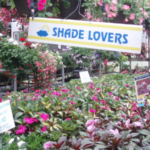
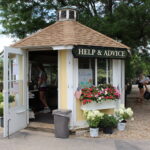

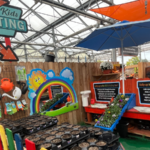

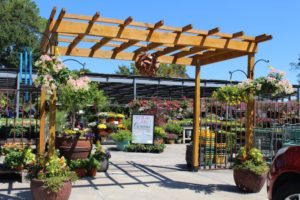
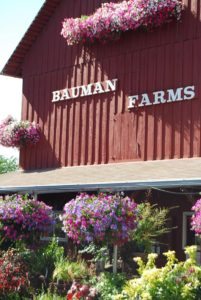

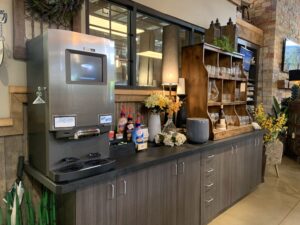
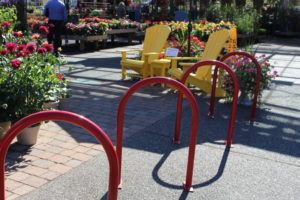

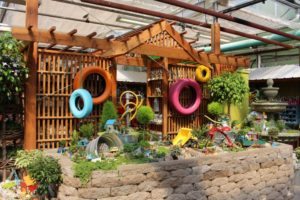
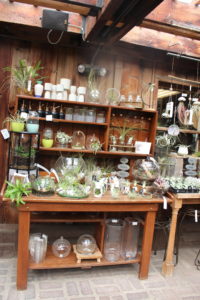
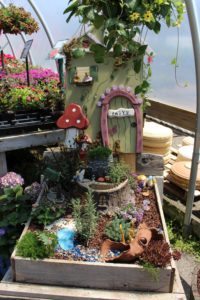
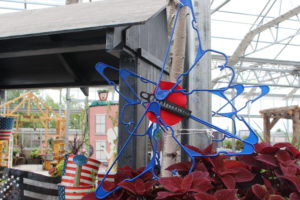
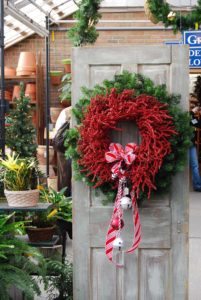
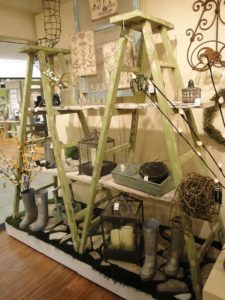
 Videos
Videos





